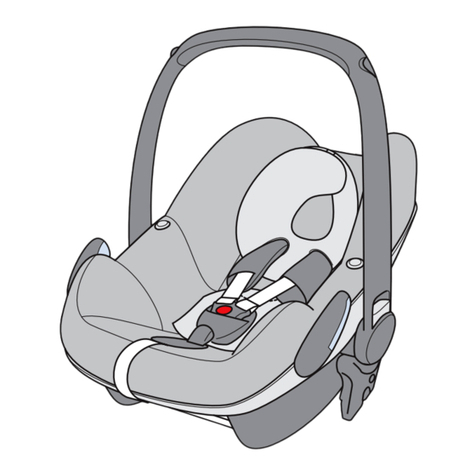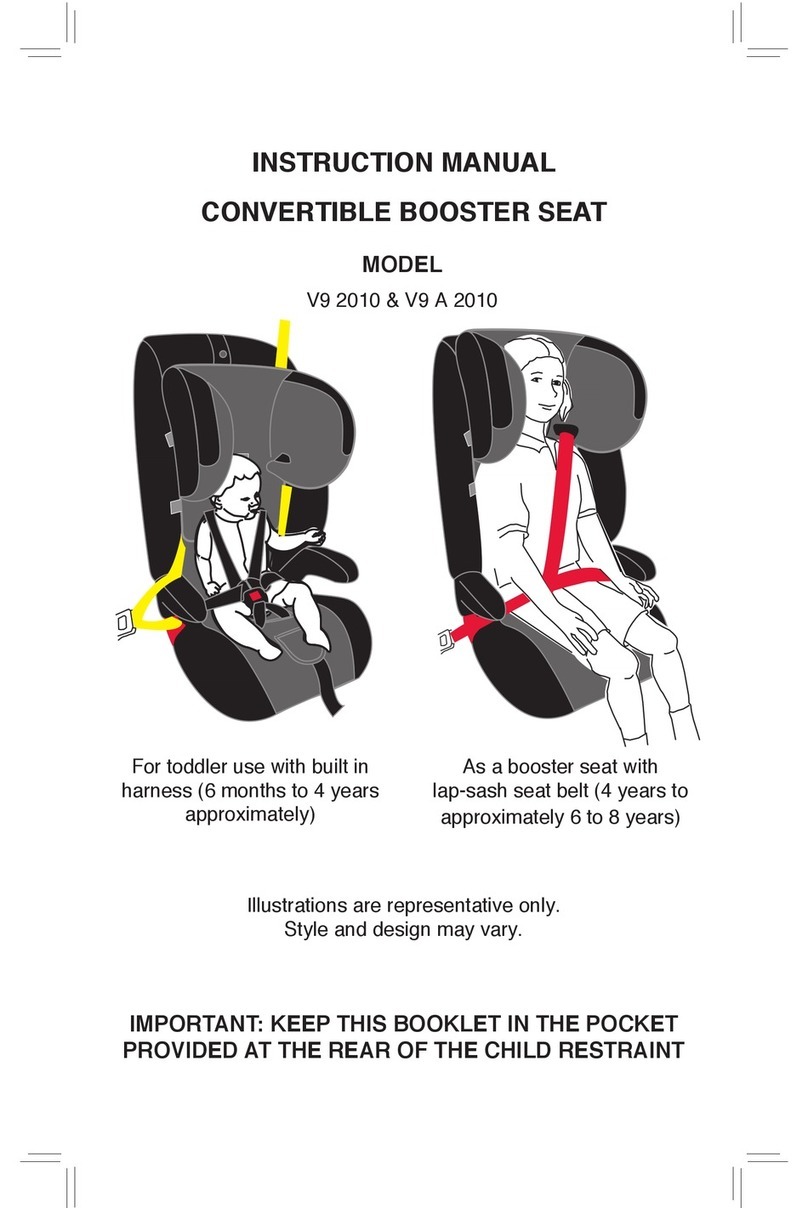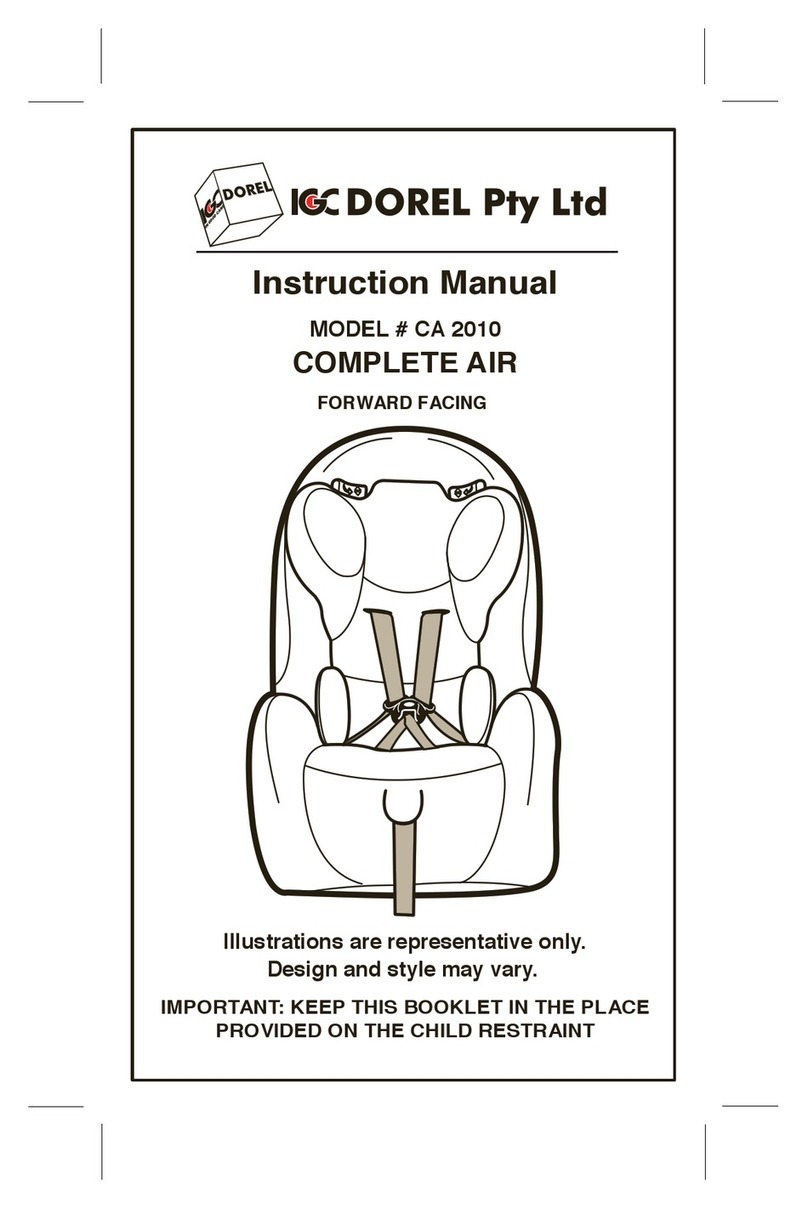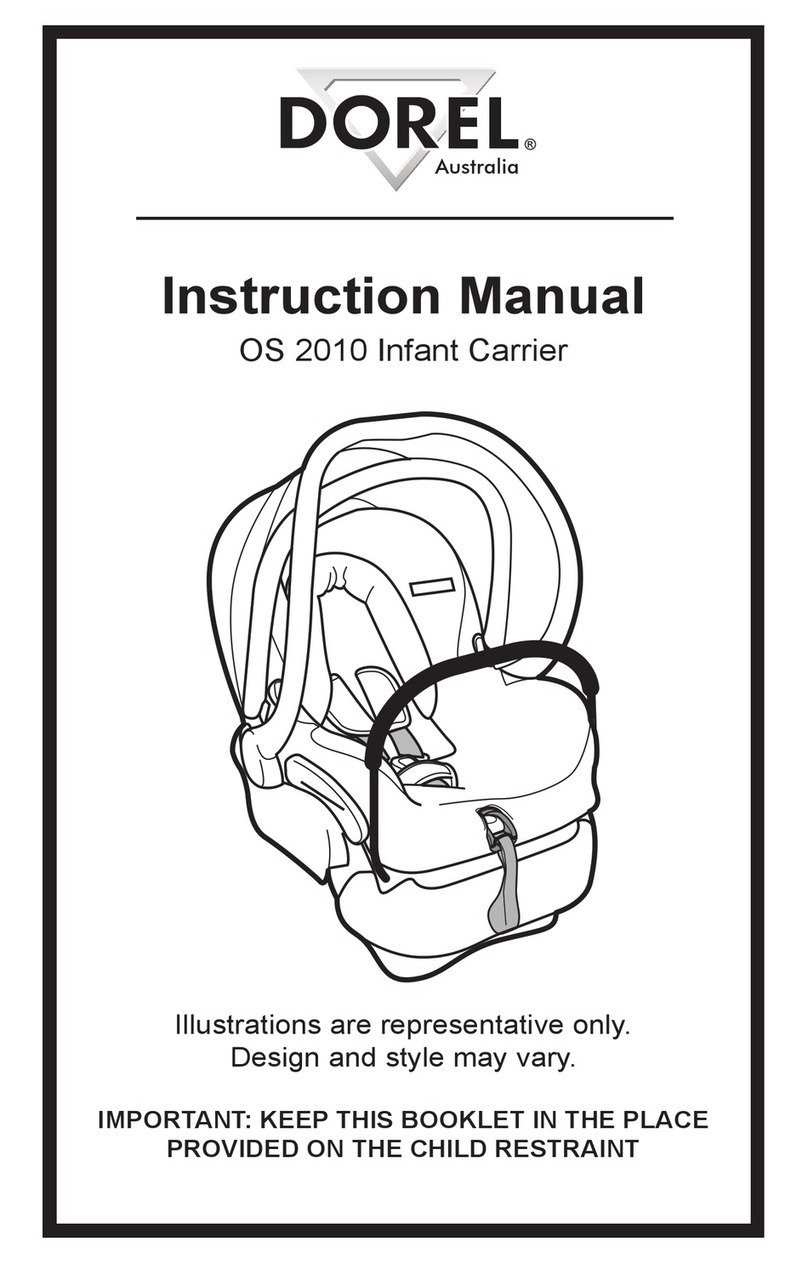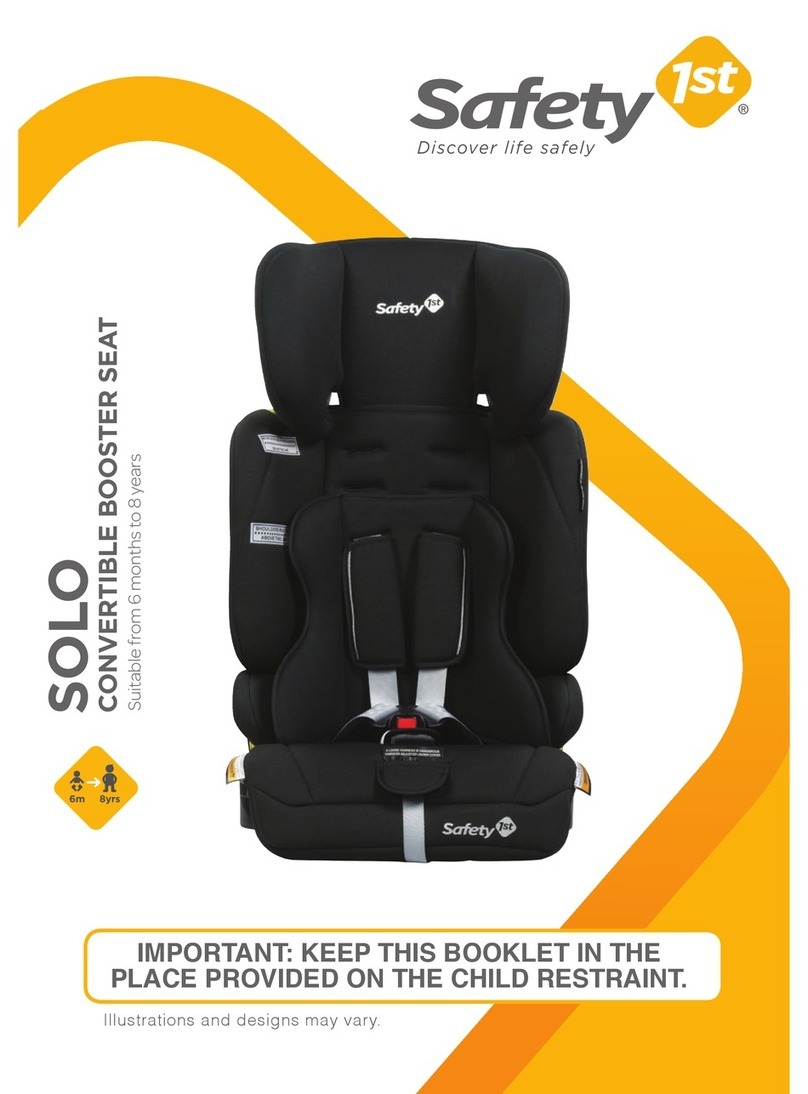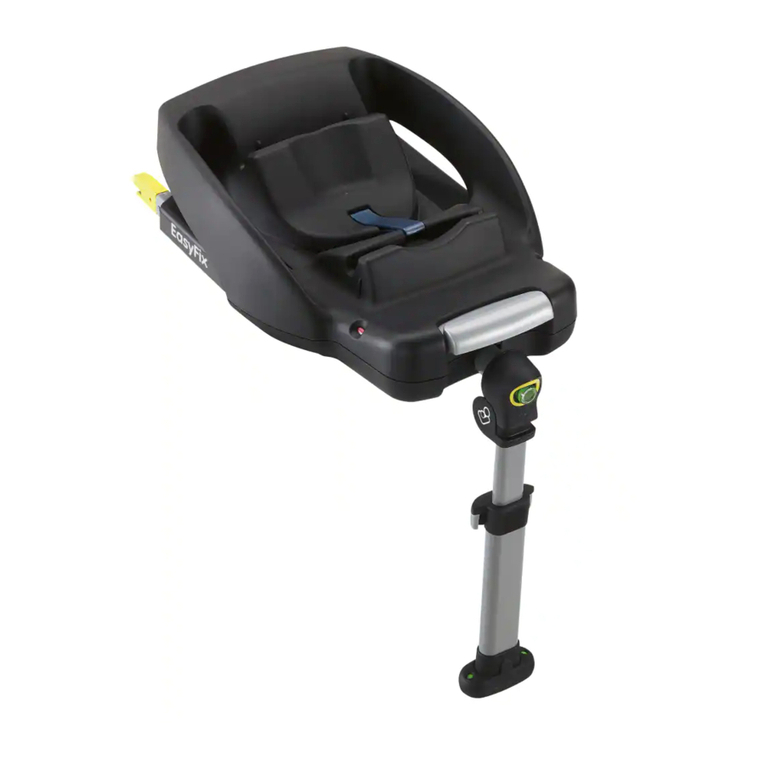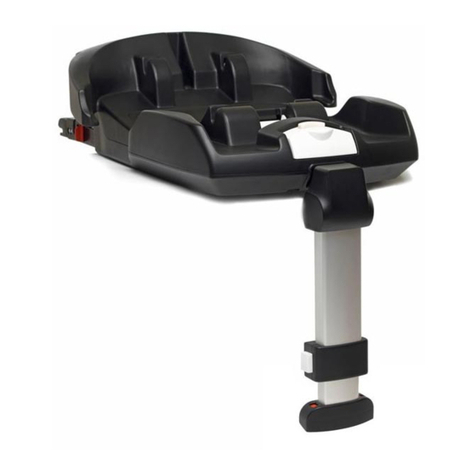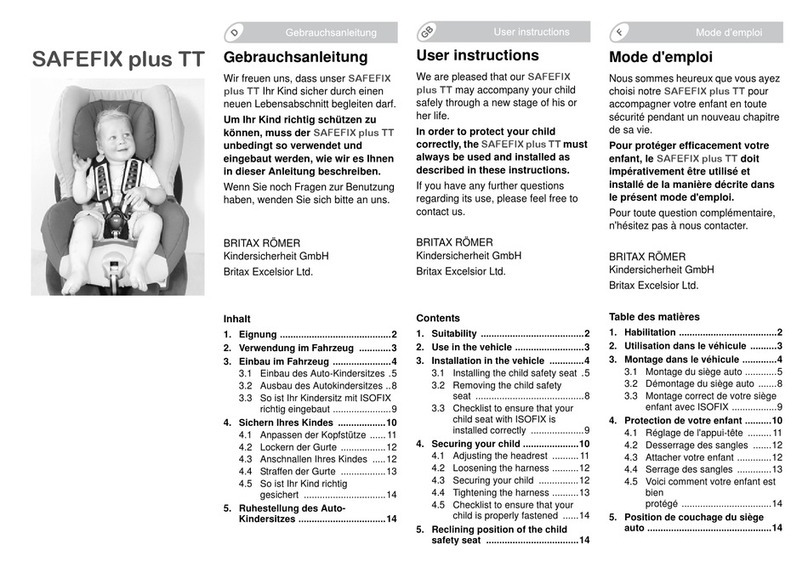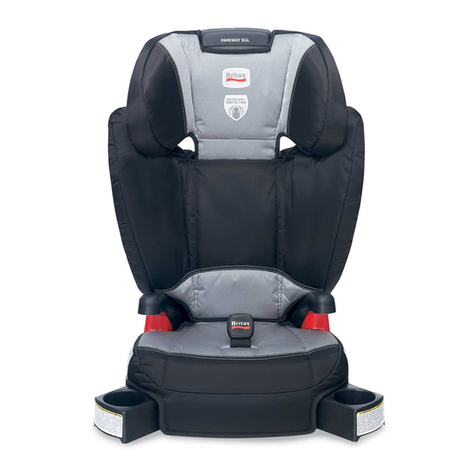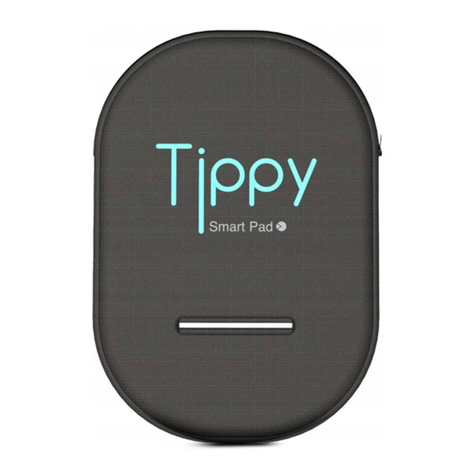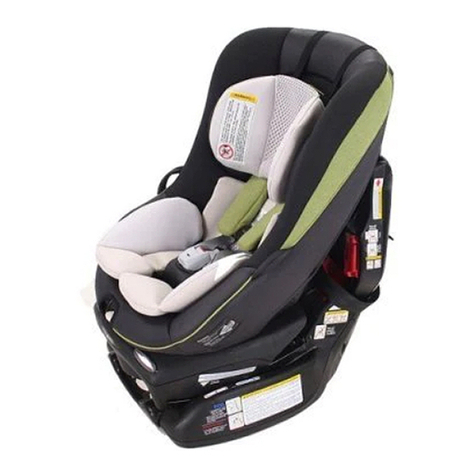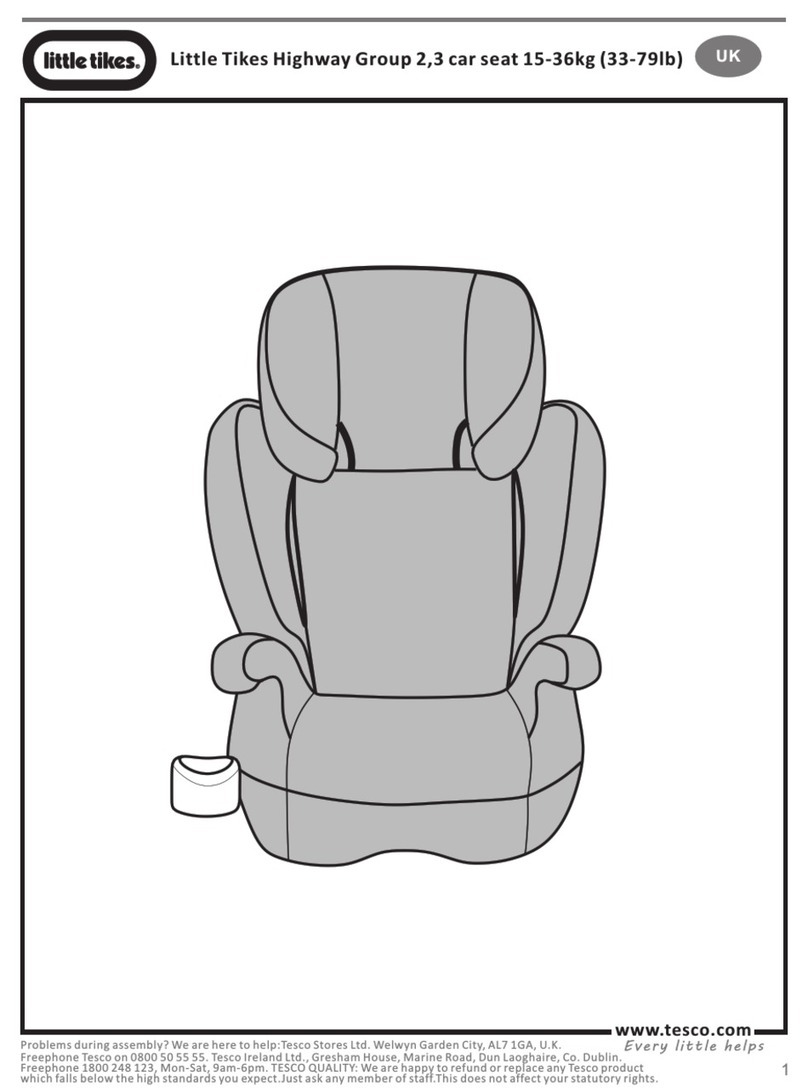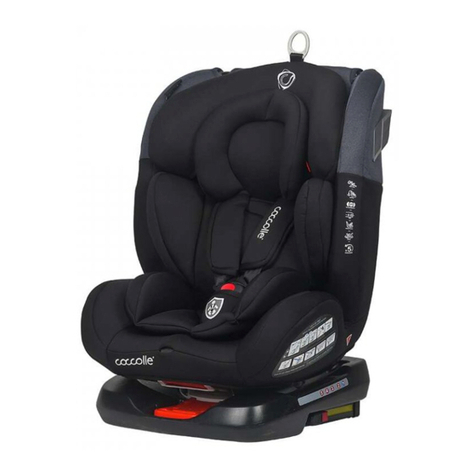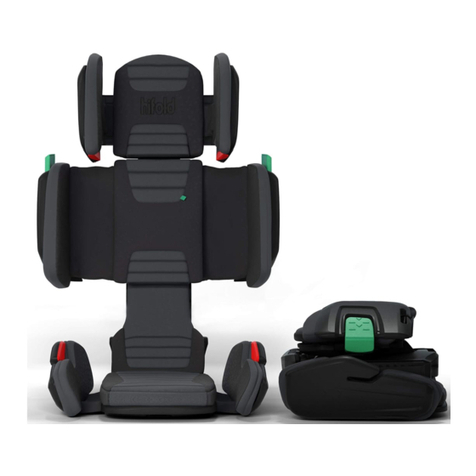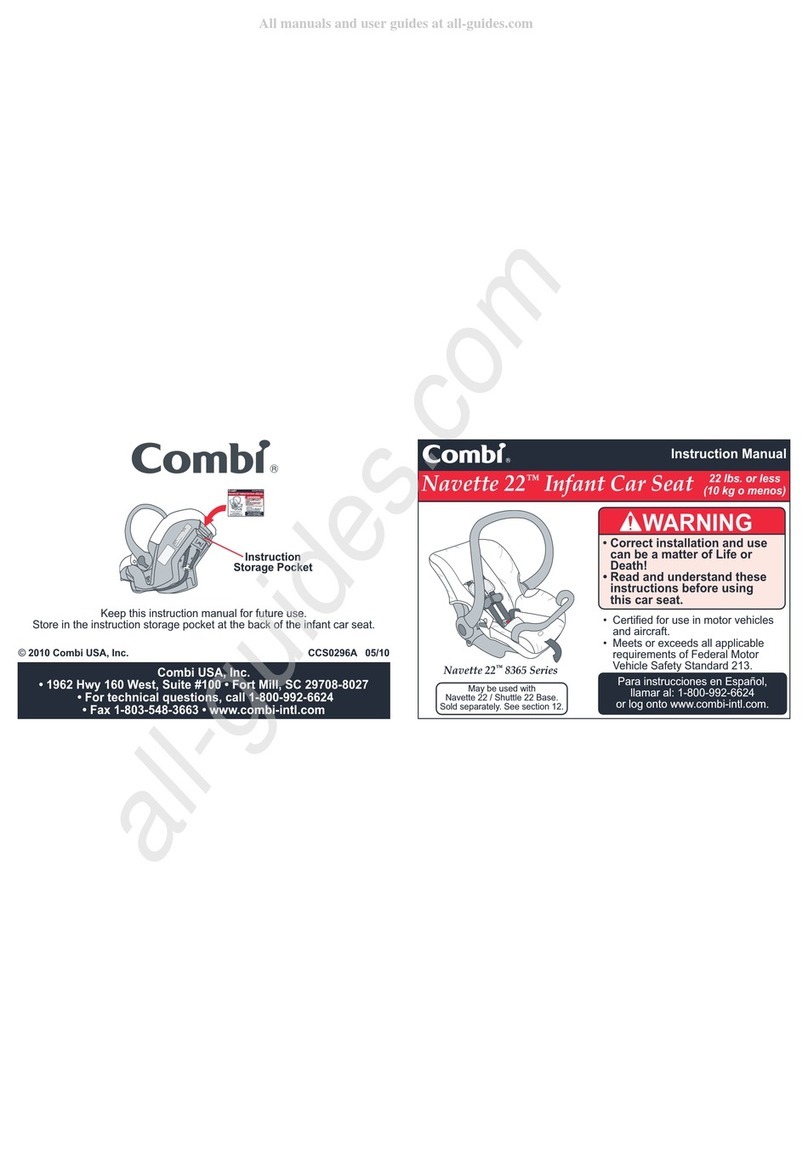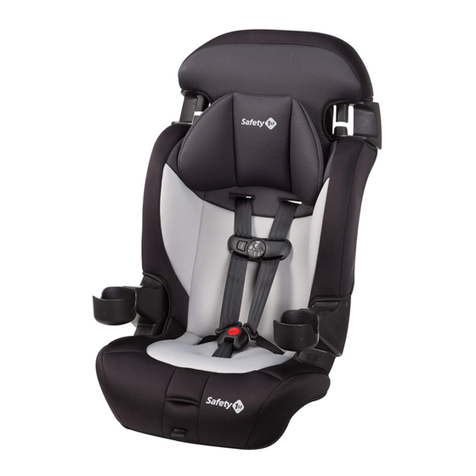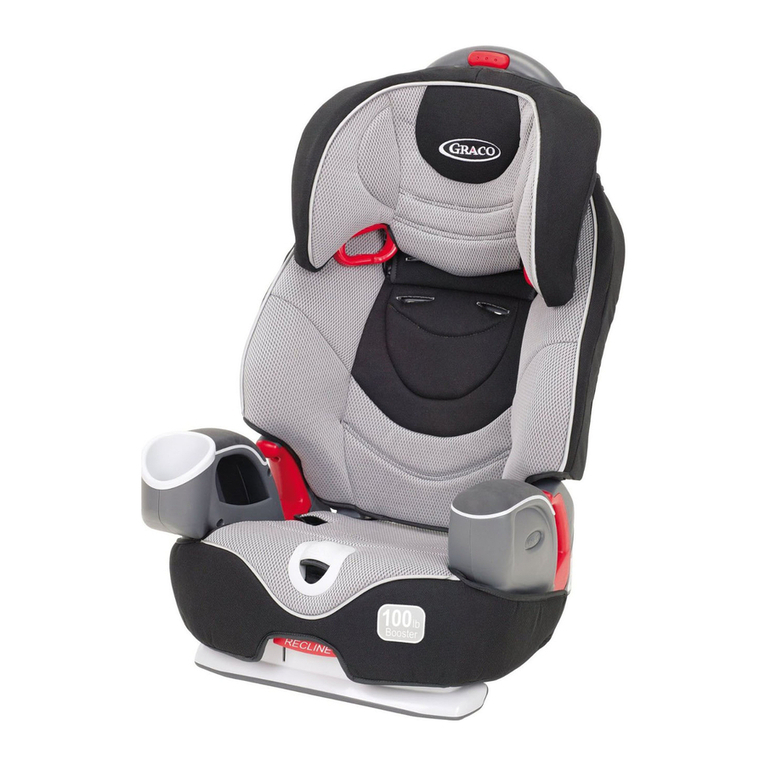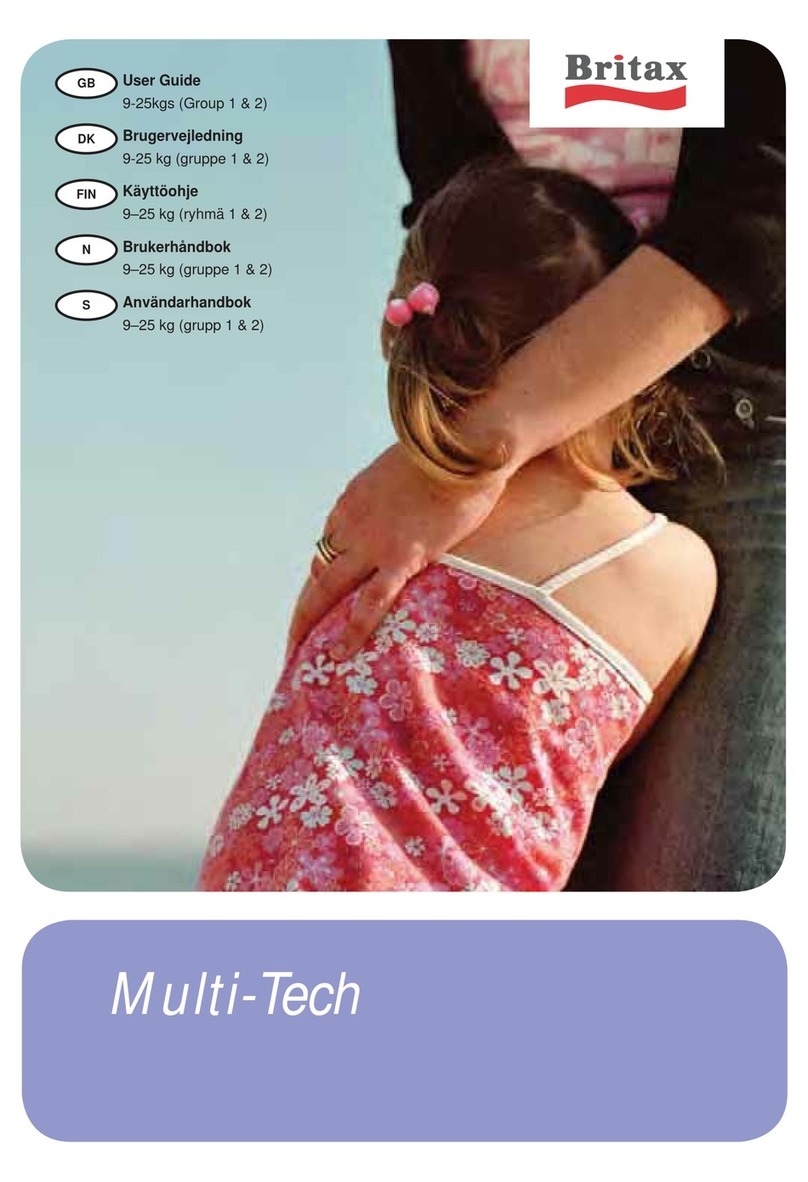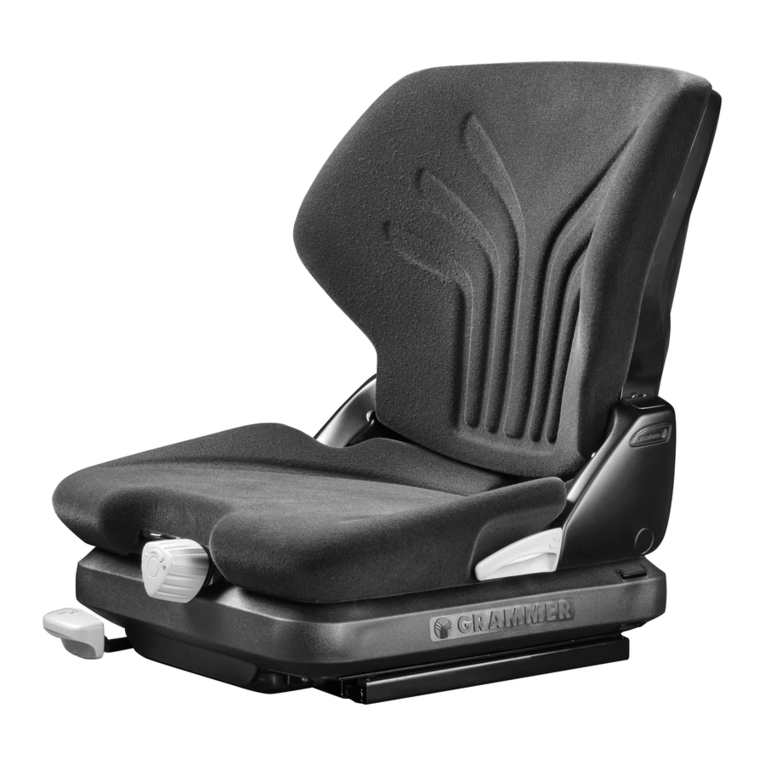P. 2 of 2
Dorel TrioFit
Angle adjustment: There are 3 positions. Grasp handle in center front of
seat (diagram 7), pull out to recline, pull up on center of seat to make
upright. Use fully reclined or semi-reclined for rear-facing and upright for
forward-facing. For children who cannot sit up unassisted, level line on
shell (diagram 8) must be parallel to ground. When forward-facing, use
fully upright position. If forward facing in harness or booster mode, use
semi-reclined position only if needed to make child restraint flush against
upright vehicle seatback.
Belt path: If LATCH is not in use, thread connectors through rear-facing
belt path and attach connectors to storage locations on sides of restraint
(diagram 9). Do not install restraint in harness or booster mode
using inflatable safety belt.
With harness:
Rear-facing: The vehicle belt is routed under child’s legs through
slots on each side of shell.
Forward-facing: The vehicle belt is routed through slots behind the
seat.
Without harness: Remove crotch strap and store harness behind
headrest and seat pad (diagram 10). Use vehicle lap-shoulder belt on child
as shown in diagram 11. Do not use guide under headrest to position
shoulder belt unless necessary for correct fit on child. LATCH straps
are not used in booster mode.
LATCH: Comes with a single attached lower connector strap. Lower
connector strap is not used in belt-positioning booster mode. For
rear-facing use, thread strap through hole in side of shell, under seat
pad and between buckle strap and harness adjuster lever, and through
rear-facing belt path. For forward-facing use, thread strap through
forward-facing belt path. Discontinue use of lower anchors when child is
40 lbs. Lower anchors may be used in center seating position only when
position is designated as a LATCH location in vehicle owner's manual and
space between bars is at least 11 inches (refer to Safe Ride News LATCH
manual).
Tether: Yes, for forward-facing use with harness only. If tether is not in
use, store as shown in diagram 12.
Other: Grow and Go and MultiFit have similar appearance, but different
weight limits.
Restraint expires ten years from date of manufacture.
Restraint may be used on aircraft in harness modes only.
DOREL brands include: COSCO, SAFETY 1st, and MAXI-COSI.
Model names may apply to any one or more of these brands.
Important: This information sheet is not a substitute for complete manufacturer’s directions and current recall list.
SafetyBeltSafe U.S.A., P.O. Box 553, Altadena CA 91003 (310) 318-5111 (800) 745-SAFE ©SafetyBeltSafe U.S.A. #450 10/21
7
8
9
11
10
12
